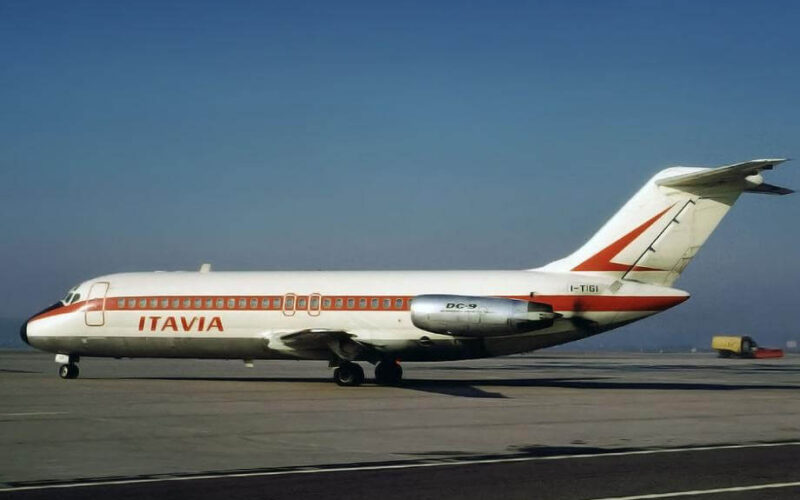On June 27, 1980, a McDonnell Douglas DC-9 passenger jet routing from Bologna to Palermo, Italy, crashed into the Tyrrhenian Sea between the islands of Ponza and Ustica. All 81 people on board, including passengers and crew, died.
Even 40 years after the accident, the tragic Itavia Flight 870 is still surrounded by mystery, accusations and conspiracy theories.
Chronology of Itavia Flight 870 disaster
On June 27, 1980, at 20:08 (CEST), a McDonnell Douglas DC-9-15 flown as Aerolinee Itavia Flight 870 finally departed with 1:53 hours delay from Bologna Guglielmo Marconi Airport to Palermo Punta Raisi Airport, Sicily. There were 77 passengers and two flight attendants in the cabin; Captain Domenico Gatti and First Officer Enzo Fontana were at the controls. The flight was designated IH 870 by air traffic control, while the military radar system used AJ 421.
At 20:37 (CEST), the aircraft was flying over the Tyrrhenian Sea near the island of Ustica, about 120 kilometers southwest of Naples.
At 20:59 (CEST), the McDonnell Douglas DC-9 broke apart mid-air and crashed into the sea.
One minute after the accident, two Italian Air Force F-104s were sent to search for any survivors. Due to poor visibility, they could not find anyone.
The several hypotheses of Itavia Flight 870
Terrorism
Itavia Flight 870 was considered to be one of the “Years of Lead” bomb attacks. The term “Years of Lead” defines a wave of far-right and far-left incidents of political terrorism in Italy in 1960-1980s.
The investigation found credible physical evidence that a bomb had indeed exploded mid-flight in the rear lavatory. A large section of the aircraft’s fuselage around the lavatory was never recovered, likely because of the explosion. A test explosion in a DC-9 lavatory gave the resulting deformation in the surrounding structure to be almost identical to that of the accident aircraft.
Missile strike during military operation
Major sources in the Italian media claimed that aircraft might have been shot during the assassination attempted by NATO members on one of Libyan politicians, possibly even Libyan leader Muammar al-Gaddafi, who was flying in the same airspace that evening.
In 1999, the theory of terrorism was denied. A comprehensive investigation of Judge Rosario Priore concluded that Itavia Flight 870 had seemingly been caught in a dogfight between Libyan MiGs and NATO jet fighters.
Conspiracy theories
During the 40 years since the accident, Itavia Flight 870 has been surrounded by multiple conspiracy theories. Some of them track their roots to the fact that the vessel, which searched for DC-9 wreckage, was French but only U.S. officials had access to the aircraft parts they found. One of the examples was that the craft, which searched wreckage on the ocean, was French, but only U.S. officials had access to the aircraft parts they found.
Also, investigators and victims’ relatives faced difficulties in receiving comprehensive and certain information about the DC-9 disaster. Due to the several “bounce back” investigations, the Itavia Flight 870 was commonly called as un muro di gomma, meaning a rubber wall.
Museum for the Memory of Ustica
The memorial museum of Ustica opened its doors in 2007, in Bologna, Italy. The museum has the majority of crashed plane parts, including most of the external fuselage.
In addition to the wreckage, the memorial museum presents the permanent display, containing 81 mirrors, which hide speakers that project whispered messages, also including 81 hanging bulbs, which keep switching on and off.

